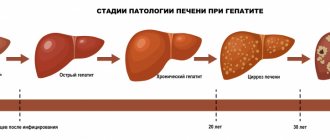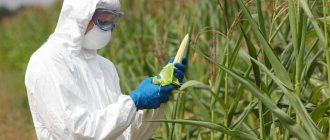Useful articles / June 9, 2019
If you have an allergy, you will never confuse its symptoms with something else. You start sneezing, your eyes itchy and watery, your nose is stuffy, your throat is sore... This is how the immune system responds to an external irritant.
Many people believe that if the allergy did not start in childhood, then the disease will bypass you in the future. In fact, allergies can manifest themselves at any age. If this happens, then first you need to find out what is the cause of the body’s allergic reaction? What types of allergy tests are there? How do they differ from each other and which one should you choose?
The World Health Organization cites frightening statistics - the number of allergy sufferers around the world is increasing exponentially. According to WHO and the World Allergy Organization, more than 30% of the world's inhabitants have at one time or another experienced an unusual reaction of the immune system to any irritant - be it pollen, food or chemicals. Currently, allergies are the 4th most common allergy in the world. She was “overtaken” by cardiovascular diseases, injuries and neoplasms.
An allergy is a special reaction of the immune system to substances of natural or artificial origin. It is important to understand that this is not a disease, but another type of immunity with which a person is born. The body of such a person produces other antibodies that are hypersensitive to the irritating factor. A simple example is house dust, to which there should be no allergic reaction. But an allergic person has it for the reason that his immunity is hypersensitive. This reaction can be caused by plant pollen, food, animal hair, library dust, etc. The immune system can perform such “tricks” at the age of 5 or at the age of 60.
Pulmonary function test (spirometry)
The pulmonary function test measures the volume of air inhaled and exhaled and determines the so-called FVC (forced vital capacity) or functional lung volume, as well as the forced expiratory volume in the first second (FEV1). Spirometry is one of the methods for checking pulmonary ventilation.
The test determines:
- Is the ventilation of the lungs impaired?
- What is the nature of the obstructive pulmonary function - obstruction or limitation.
- What is the degree and reversibility of bronchial obstruction.
Spirometry parameters depend on the subject's age, gender, body weight and smoking. Spirometry readings are given in absolute numbers (liters and liters per second) and as a percentage of the required value.
Generally speaking, you will be screened for asthma.
Spirometry
Will allergy tests help in diagnosing allergies in an infant?
Answer: they can help, but not much. Of course, in a number of severe cases, when a pregnant mother leaned heavily on, say, chocolate throughout her pregnancy, drank milk in liters or ate a mixture of walnuts and honey, then in this case the child may develop a hidden, latent allergy to cow protein in utero milk, nuts, fish or chocolate, in which case allergy tests will certainly give us results. In most cases, in the first six months of life, the level of specific immunoglobulins E in a child is still so low, and these antibodies do not stay in the blood for long, since their main target is mast cell receptors, so the result of allergy tests taken from a baby in the first months of life is in most cases, except for those I mentioned earlier, it will be negative.
Somewhere closer to a year, of course, you can confidently refer the child for allergy tests, but before that it is better to ask the mother to keep a food diary for a month or two in order to then compare the results of the allergy tests with the observations of the mother herself.
Skin samples
- Skin prick samples.
Such tests are carried out with a special needle on the surface of the skin of the forearm. There are drops of allergen on the needle. Each allergen is a separate drop. The reaction is assessed after 15 minutes: a pimple of a certain size is measured on the spot. This test helps identify quick-type allergic reactions - allergies to pollen, house dust mites, animal dander, mold fungi. Skin testing can be done with commercially available allergen extracts, but some are too sensitive to react immediately, such as fruit, vegetable, and meat allergens. In such cases, so-called puncture tests are carried out with natural allergens, i.e., an apple and skin, a banana and skin, a carrot and skin, etc. are first punctured. - Scratch test.
A prick test may be performed to test for medications. Allergenic solutions are applied to the inner surface of the skin of the forearm and a special needle is used to scratch the surface of the skin.
Types of allergy tests
They are divided into two types: this is a test for a suspected allergen, skin reaction and blood reaction. The advantages of the first type are that skin tests are reliable, simple and cheaper, and the patient receives the result immediately. Blood tests take longer and are more expensive, but they do not cause allergic reactions.
Skin testing
Although skin tests are performed in different ways, the principle is the same - a small amount of allergen(s) is applied to the skin, and then the site of application is carefully examined. The observation time for the reaction is limited to 15 minutes, the results of skin tests become known immediately after they are carried out.
Skin allergy tests
Skin testing can be done on anyone (child or adult). This method has virtually no contraindications.
Allergens that are applied to the skin during research, if carried out correctly, are not dangerous. At our clinic, allergists are trained to provide emergency care.
In addition to scratch and prick tests, there is an intradermal (intradermal) allergy test. It is carried out by injecting a small amount of the allergen directly into the skin. This method is used when the results of skin tests have an ambiguous interpretation.
Another test is to use a special patch on which the allergen is applied. This method is often used to identify contact dermatitis. A patch with an applied allergen is attached to an area of the patient’s skin, and after 24-72 hours the reaction to it is analyzed.
Skin tests have the following set of allergens:
- standard formulations of drugs required for specific immunotherapy;
- food and inhalation allergens;
- occupational allergens;
- mixture of allergens.
Allergy tests by blood
As a result of interaction with allergens, specific IgE antibodies are formed in an allergic patient. By assessing the amount of antibodies, you can identify the allergen and the severity of the allergic reaction.
To determine allergens by blood, it is necessary to draw blood and have it tested in the laboratory. The results will be known in 3-5 days. Unlike skin tests, blood tests take longer. The result is expressed quantitatively and allows you to track indicators throughout the entire treatment period. The peculiarity of in vitro diagnostics is that it is carried out using kits that determine total and specific IgE, which are based on the classical ELISA and RIA technologies.
The choice of diagnostic method is up to the doctor. Sometimes a combination of these options is used. The test result cannot be treated. It is necessary to treat the patient with complaints, manifestations of the disease, his concomitant diseases and the results of allergy studies. Therefore, the role of an allergist in making a diagnosis remains irreplaceable and main.
Diagnostic allergy tests
Epicutaneous test (plasters)
Skin patch samples help detect slow-type allergic reactions when allergic contact dermatitis is suspected.
Special hypoallergenic patches with hypoallergenic metal capsules containing natural food allergens are applied to the intact skin of the back for 48 hours.
Epicutaneous test (plasters)
The reaction is assessed twice: 48 hours after removing the patch, and after another 72 hours. The results obtained after the first and second assessments are then compared.
Allergy tests in the diagnosis of seasonal and home allergies
Both skin prick allergy tests and analysis for immunoglobulins E in the diagnosis of allergies to pollen, fur and epithelium of domestic animals, as well as allergies to house dust, are of great help in making a final diagnosis. In principle, both of these allergy test options are equivalent, but skin allergy tests are more preferable in the case of diagnosing bronchial asthma and house dust allergies, since they can help select a more correct series of allergens for allergen-specific immunotherapy (ASIT). Good health and good luck to everyone!
Examples of provocation
When, after various studies, having learned about the food consumed, specialists discover a suspicious allergen, an elimination diet is prescribed, i.e. the allergenic product is removed from the menu. This diet usually lasts about 2 weeks.
Then a provocation is given, including a product temporarily excluded from the diet. If characteristic allergy symptoms appear, then we can indeed say that the allergen is to blame.
Provocative samples with suspected allergens and provocative inhalation samples of the mucous membrane (nasal, conjunctival, sublingual) can also be performed.
Carrying out skin tests
An examination method that helps identify types of allergens and types of reactions: • when the skin comes into contact with an allergen, blood cells are affected; • local allergic effect appears due to the penetration of the irritant into wounds on the skin with the release of serotonin and histamine; • after applying the irritant, the skin becomes red, itching, papules, and swelling appear; • Based on the results of the study, doctors determine a possible irritant, further contact with which must be excluded.
To test allergies, a solution and an allergen extract are used. Glycerin and histamine are used in testing. Irritants are applied to the skin using a needle, lancet or tampon applicator.
Indications for performing the test are:
• an attack of hay fever; • seasonal allergies; • allergic skin rashes; • inflammation of the bronchi; • conjunctivitis with allergic symptoms; • sensitivity to lactose and gluten; • Quincke's edema; • urgency of identifying the irritant; • genetic predisposition; • runny nose with allergic manifestations; • the patient has shortness of breath, nasal congestion, lacrimation, swelling of the mucous membrane; • work in hazardous production.
Contraindications for the test are:
• lung diseases of infectious origin; • AIDS; • risk of anaphylactic shock; • lactation; • asthma at the stage of improvement; • pregnancy; • malignant tumor; • intensification of an allergic attack; • skin damage; • mental disorders; • children under 2 years old; • patients over 60 years of age; • urgent need to take medications. Indications or contraindications are reviewed by the doctor, and he gives an opinion on permission to conduct the test.
Attention!
If there are absolute contraindications (pregnancy, sore throat, pneumonia, acute allergies, etc.), the test is prohibited!
Wait until you have fully recovered and the baby is born (if you are pregnant) and only then get examined. In some cases, it is allowed to use a gentle method of testing blood - conducting a highly sensitive express test for the amount of antibodies present.
Diagnosis methods
The advantages of the methods are quick results and the ability to detect a large number of allergy sources. In order to determine what caused the allergy, doctors conduct special types of tests:
• scarification test - the irritant is applied to the forearm, scratches are made using a needle or lancet; • patch test – one of the safest methods, an allergen solution is applied to a tampon in the form of a solution and applied to the body; • prick test - the irritant is applied to the skin using a special needle, a puncture is made on the skin at the site of the test; • intradermal test – is more accurate; the allergenic extract is administered subcutaneously through a syringe.
Total immunoglobulin E
Immunoglobulins E are involved in the pathogenesis of allergic reactions (pathogenesis - stages and development of painful processes and diseases).
When performing IgE testing to diagnose allergies, it is important to know the patient's age. Level fluctuations depending on the patient’s age can fluctuate hundreds or more times. Around age 15, IgE levels increase rapidly, then stabilize and slowly begin to decline.
IgE testing
Immunoglobulins E bind antigens (allergens) and bind to basophils and mast cells through the Fc receptor. Once a normal serum IgE level is determined, it is not always possible to exclude the diagnosis of allergy. (IgE multiple myeloma is an extremely rare pathology). Some authors believe that an increase in IgE levels (by itself without signs of allergy) is a risk factor for the development of allergies.
An increase in IgE levels is possible in the following cases:
- Allergies (rhinitis, sinusitis, skin reactions), anaphylactic reactions.
- Worm infections.
- Eosinophilic enteritis.
- Angioedema.
- Bronchial asthma.
- Systemic vasculitis.
- Food allergies.
- Atopic acute reactions.
- Hyperthyroidism (usually in the early stages of Graves' disease).
Why are allergy tests dangerous?
Skin testing for allergies is not completely safe, as it may be accompanied by anaphylaxis, which is the body's severe allergic reaction to an allergen. Among the symptoms of this complication, the main ones are: low blood pressure, itching, breathing problems and swelling of the face or the whole body.
Anaphylaxis seriously affects the patient’s health, but it occurs extremely rarely, and in skin tests in general in isolated cases.
When donating blood for such an analysis, you don’t have to worry about any risks other than those associated with the blood collection itself - these are bruises and phlebitis, i.e. phlebitis. To alleviate your condition, it is recommended to apply warm compresses 2-3 times a day. But when taking blood thinners, you should be prepared for bleeding during collection.
Preparing for allergy tests
7 days before the study, the use of antihistamines should be avoided (the period largely depends on the group to which the drug belongs).
If the patient was treated with systemic glucocorticosteroid drugs (injectable or oral forms), tests can be performed no earlier than 14 days after their discontinuation.
If the patient has received treatment with hormonal ointments, creams, tests are performed on areas not affected by these drugs, or at least 14 days after discontinuation. Be sure to tell your doctor about all the medications you are currently taking.
It is not recommended to carry out tests on an empty stomach; the day before there should be a light breakfast or lunch.
Intradermal test to detect tuberculosis
The tuberculin test, known as the Mantoux test, deserves special attention. A substance called tuberculin, which contains waste products of Mycobacterium tuberculosis, is injected subcutaneously. An allergic reaction occurs when the drug is administered. Moreover, it appears both in patients with tuberculosis and in those who have been vaccinated against it. The result can only be assessed by a pediatrician who studies and compares the results of several tests performed over time. For children, the Mantoux skin test is performed annually. As a result of the injection of tuberculin, a papule appears, the diameter of which is measured. This test is one of the main measures to prevent the spread of tuberculosis.
Allergy tests can help in the treatment of many skin diseases, and therefore are widely used in dermatology.
Also, this diagnostic method is often used in the treatment of bronchopulmonary pathologies, such as obstructive allergic bronchitis, bronchial asthma, as well as for the treatment of enlarged adenoids in children and food allergies. September 4, 2020
Author of the article: dermatologist Mak Vladimir Fedorovich
Contraindications to skin testing:
- exacerbation of the disease
- severe decompensated asthma (FEV1˂70% against the background of: adequate treatment)
- acute intercurrent diseases (ARVI, tonsillitis...)
- decompensated diseases of internal organs (liver, kidneys...)
- exacerbation of chronic infections (tuberculosis, syphilis...)
- autoimmune diseases (SLE, RA, scleroderma...)
- history of anaphylactic shock during skin testing
- malignant neoplasms
- mental illness
- AIDS
Indirect skin tests
In cases where it is necessary to identify the allergen, and direct skin tests are not possible due to the above restrictions, indirect skin tests can be performed.
The indirect skin test method involves intradermal injection of the patient's blood serum into a healthy person. Then, after 24 hours, the allergen is injected into the same place. The development of an allergic reaction at the test site indicates that the appropriate antibodies are present in the serum used.
This method is used to a limited extent, as it provokes the development of an allergic reaction in a healthy person. In addition, there is a risk of transmitting a hidden infection through the blood. To detect antibodies in the blood, in most cases it is recommended to use laboratory diagnostic methods.
The disadvantages of the method include:
- longer testing period compared to skin testing
- high cost of examination
- the likelihood of obtaining negative results in patients with atopic diseases in remission due to the short lifespan of circulating IgE or due to the presence of an IgG-mediated reaction in the patient.
It is possible to carry out a selective determination of individual specific antibodies or a complex one. Allergens are divided into different groups corresponding to natural sources; in addition, sensitivity to a mixture of allergens can be determined during screening studies.
Skin allergy testing is performed to determine the spectrum of sensitization in patients with atopic diseases, as well as to identify hypersensitivity to bacterial allergens.
When conducting skin testing, only standardized diagnostic allergens approved for use in Russia .
Scarification and prick tests are performed using: household, epidermal, pollen, fungal, food and insect allergens, as well as latex allergens.
Evaluation of skin testing results
| Reaction result | Symbol | Characteristics of skin manifestations | |
| prick test | Scarification test | ||
| Negative | — | The nature of the reaction is similar to that in the control with the test control liquid | No blister or hyperemia |
| Doubtful | ± | Hyperemia without a blister | Hyperemia without a blister at the site of scarification |
| Weakly positive | + | Blister with a diameter of 3-5 mm, clearly visible only when the skin is pulled, erythema 0-10 mm | Blister 2-3mm, noticeable when the skin is pulled, hyperemia |
| Positive | ++ | A blister with a diameter of 5-10 mm, surrounded by a ring of hyperemia, noticeable without stretching the skin | Blister 4-5 mm, noticeable without stretching the skin, hyperemia |
| Strongly positive | +++ | Blister with a diameter of up to 10-15 mm, hyperemia more than 10 mm | Blister 6-10 mm, hyperemia or blister 6-10 mm with pseudopodia, hyperemia |
| Very strongly positive | ++++ | Blister more than 10 mm in diameter with pseudopodia or more than 15 mm and an area of erythema up to 20 mm, general reactions | Blister more than 10 mm, hyperemia or wheal more than 10 mm with pseudopodia, bright hyperemia and lymphangitis |
Skin tests are scored only if the reaction to the test control fluid (negative control) and histamine (positive control) is correct.
Despite the fact that skin testing is the main clarifying method for diagnosing allergic diseases, the specificity of skin allergy tests is not absolute.
Skin testing may be uninformative (false-positive or false-negative results) for a number of reasons: violation of the technique of performing skin tests and changes in the properties of allergens if they are stored incorrectly, decreased skin reactivity, pronounced skin dermographism, patients taking drugs immediately before the study that inhibit the development of reagin-type reactions and etc. It is possible that positive results of skin tests may appear in patients who do not have clinical symptoms of the disease, the so-called latent sensitization.
The results of skin testing can only determine the presence of increased sensitivity of the body to a specific allergen. In order to make a final diagnosis and determine treatment tactics, it is necessary to establish a clear connection between this allergen and the clinical manifestations of the disease.











